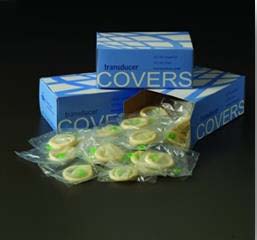International Infection Prevention in the Ultrasound Suite

Prevention is always better than the cure!
Infection prevention is an ongoing patient safety issue that must be at the forefront of every healthcare worker's mind. Dedicated infection prevention and control (IPC) specialists are responsible for so many tasks within a healthcare setting - from risk analysis of an infectious patient in isolation, controlling an outbreak, auditing to ensure compliance to guidelines for infection control, educating healthcare workers on updated literature and providing tools to support a department to prevent an infection. But is it just the responsibility of the resident IPC specialist?
 During this era of
antimicrobial resistance, infection prevention in healthcare is becoming increasingly important. The hand hygiene
initiative launched by the WHO has been highly effective in reducing infections and education programs focused on
limiting antibiotic use have increased awareness of this growing antimicrobial resistance issue.
During this era of
antimicrobial resistance, infection prevention in healthcare is becoming increasingly important. The hand hygiene
initiative launched by the WHO has been highly effective in reducing infections and education programs focused on
limiting antibiotic use have increased awareness of this growing antimicrobial resistance issue.
According to the CDC, there are 1.7 million healthcare-associated infections (HAIs) in the US1. One area that is often neglected as a potential vector in the transmission of an HAI is the ultrasound unit. Ultrasound is a safe tool used in the diagnosis of medical conditions and is now utilized more frequently in almost every area of medicine, from traditional obstetrics and vascular to emergency and point of care situations. The ultrasound world, however, is still catching up to the concept of infection prevention and control.
In a worldwide survey of all users of ultrasound disseminated via the World Federation for Ultrasound in Medicine and Biology (WFUMB), there was a reported gap in knowledge of infection prevention and control measures in ultrasound and variable practices when performing an examination2 from:
 Lack of compliance of
high-level disinfection following endocavity examinations or if the probe has come into contact with blood;
Lack of compliance of
high-level disinfection following endocavity examinations or if the probe has come into contact with blood;
- Varied usage of probe covers for procedures;
- Use of non-sterile ultrasound gel for biopsies and open wounds;
- High glove usage but low hand hygiene practices.
These results indicated that ultrasound users had differing levels of education in basic infection control practices and many respondents requested more access to guidelines and training.
In early 2017, the Australasian Society for Ultrasound in Medicine (ASUM) collaboratively with the Australasian College for Infection Prevention and Control (ACPIC) released joint Guidelines for Reprocessing Ultrasound Transducers3. These were the first Guidelines written by all users of medical ultrasound, infection control specialists, and microbiologists. Since then, many other ultrasound organizations, such as the AIUM, have updated their guidelines for the disinfection of ultrasound transducers.
Globally, the message is the same:
- if the probe has come into contact with blood or bodily fluids, it must undergo high-level disinfection;
- if the probe is used externally on intact skin it can undergo a cleaning step and/or be followed by low-level disinfection.
Covers are an important barrier, not just to ensure there is no infection transmission from patient to patient but
also to protect the probe. There have been varied usage in the type and quality of covers for interventional
procedures and endocavity examinations. Barriers that are not approved for use on medical devices are surprisingly
common from:

- disposable hand gloves;
- wound care dressings;
- cling film wrap;
- plastic bags or food freezer bags.
Furthermore, these barriers have not been tested as an ultrasound probe cover for preventing infection and may contribute to a breach in the process, especially if users are not cleaning the probe between patients.
Infections from ultrasound examinations can be difficult to trace and many are not reported. They do occur, however: from a case of hepatitis C infection post transrectal prostate biopsy4 to a death of a patient who contracted hepatitis B following a transoesophageal ultrasound examination5. Contaminated ultrasound gel can also lead to an infection with numerous cases reported,6,7,8 including patients who died from septic shock9.
How can ultrasound users prevent a patient from acquiring an infection?
The first step is to be aware that the entire ultrasound unit may be a potential vector in the transmission of infection and the second is to adhere to best practice guidelines:
- Follow recommendations for cleaning & disinfection of ultrasound probes;
- Use only approved barriers for ultrasound examination;
- Understand that contaminated ultrasound gel can contribute to an infection and minimize risk as such.
And it also comes down to education.
- Education from governing bodies and societies to produce best practice guidelines;
- Education on basic infection prevention for all ultrasound users to appreciate their vital role and duty of care to their patients;
- Education from manufacturers of ultrasound disinfection systems to ensure appropriate training of their systems and to highlight where potential breaches in reprocessing may occur.
This multipronged approach to education is beneficial to raise awareness and work toward a practical solution to infection prevention and control in ultrasound.
Education is key. Always has, always will be; but above all, it is always about the patient.
References
- Klevens R, Edwards J, Richards C, Horan T, Gaynes R, Pollock D, and Cardo D. Estimating Health Care-Associated Infections and Deaths in U.S. Hospitals, 2002. Public Health Reports. 122 (2007): 160-166.
- Westerway SC, Basseal JM and Abramowicz J. Medical ultrasound disinfection and hygiene practices: WFUMB global survey results. Ultrasound in Medicine and Biology (Accepted; in press).
- Basseal JM, Westerway SC, Juraja M, van de Mortel T, McAuley TE, Rippey J, et al. Guidelines for reprocessing ultrasound transducers. Australas J Ultrasound Med 2017; 20: 30-40.
- Ferhi K, Roupret M, Mozer P, Ploussard G, Haertig A, de La Taille A. Hepatitis C transmission after prostate biopsy. Urology Case Reports. 2013;797248
- Medicines and Healthcare products Regulatory Agency UK. Medical Device Alert. 28 June 2012. Reusable transoesophageal echocardiography, transvaginal and transrectal ultrasound probes (transducers). Document: MDA/2012/037
- Olshtain-Pops K, Block C, Temper V et al (2011) An outbreak of Achromobacter xylosoxidans associated with ultrasound gel used during transrectal ultrasound guided prostate biopsy. J Urol 185:144-147
- Oleszkowicz SC, Chittick P et al (2012) Infections associated with use of ultrasound transmission gel. proposed guidelines to minimize risk. Infect Control Hosp Epidemiol 33(12):1235-1237
- Shaban RZ, Maloney S, Gerrard J, Collignon P, et al. Outbreak of health care-associated Burkholderia cenocepacia bacteraemia and infection attributed to contaminated sterile gel used for central line insertion under ultrasound guidance and other procedures. American Journal of Infection Control. 2017; 45(9):954-958
- Abdelfattah R, Aljumaah S, Alqahtani A, Althawadi S, Barron I, Almofada S. Outbreak of Burkholderia cepacia bacteraemia in a tertiary care centre due to contaminated ultrasound probe gel. Journal of Hospital Infection. 2017; pii: S0195-6701(17)30516-9





